Of all the pests that plague gardens throughout the season, aphids are among the most destructive, overwhelming, and frustrating.
Also known as plant lice, garden lice, or greenflies, they seem to multiply overnight and can quickly invade a garden, leaving you with sticky, stunted plants that struggle to survive.
Not ones to be particularly picky, aphids are voracious feeders and descend on both indoor and outdoor plants, including ornamentals and edibles.
Though we tend to view them in a negative light, we should really be thinking of aphids as nature’s indicator that something is out of balance. Aphids aren’t necessarily “bad” bugs—they tell you when something bad is going on in the garden.
Aphids usually show up on plants that are under some sort of stress—perhaps from drought or heat stress, or overwatering, or over-fertilizing.
Luckily, aphids are one of the easier pests to manage if you catch them early, before their colonies grow too large.
And just how large? you may be wondering.
Well, under optimal environmental conditions without any predators, parasites, or diseases, a female aphid hatched in spring can theoretically produce up to 600 billion descendants, or up to 41 generations of females in a single season!
So it’s important to tackle the problem early, or prevent plant lice from happening in the first place. And to do that, you first have to know what you’re looking at.
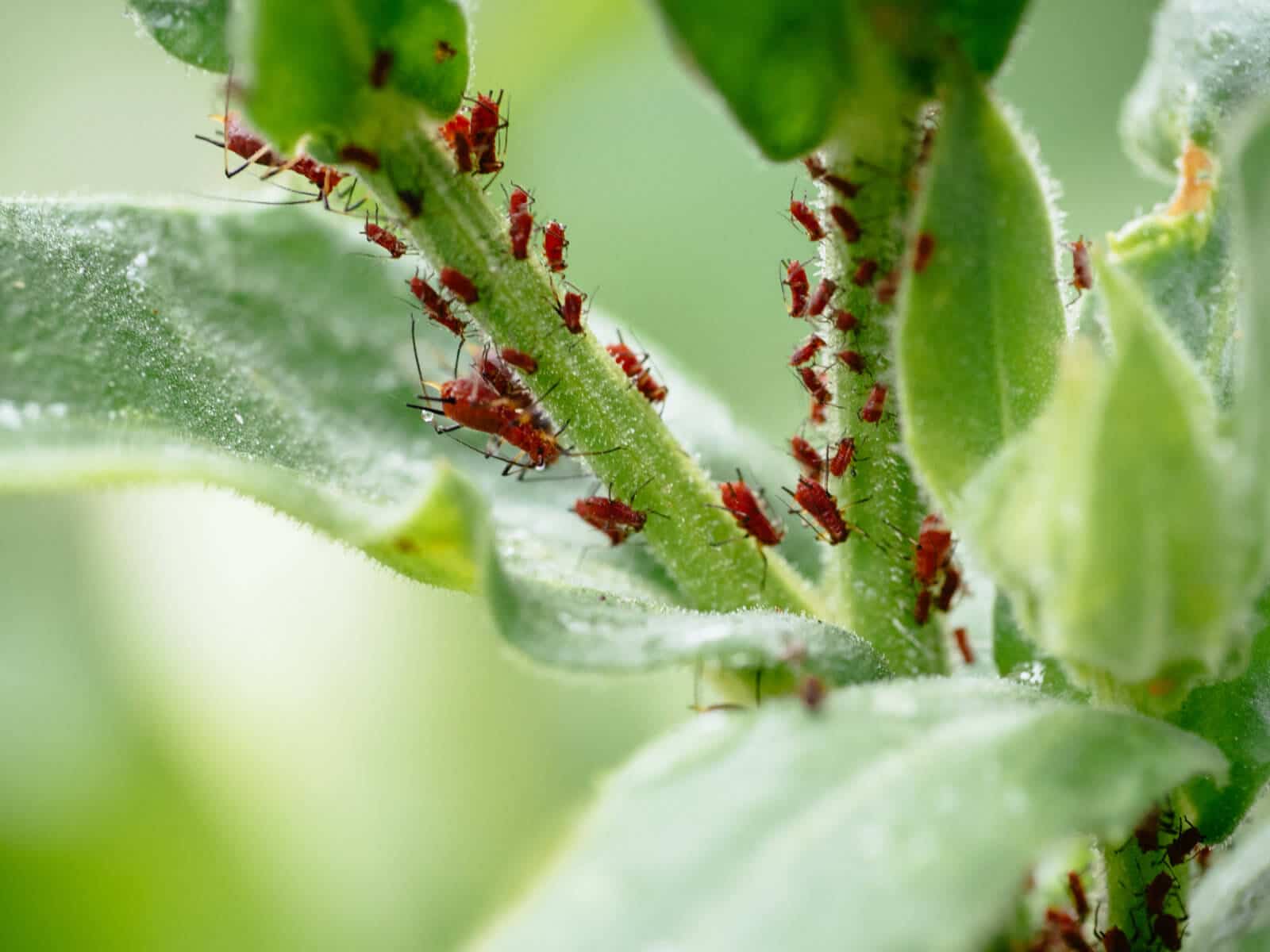
Aphids don’t all look the same
Aphids are tiny, soft-bodied, sap-sucking insects belonging to the superfamily Aphidoidea.
Ranging from 1/16 to 1/4 inch long, aphids have waxy, pear-shaped bodies that vary widely in color, depending on the species (to date, about 5,000 species have been discovered).
Green aphids (greenflies) are often the most damaging because they blend in so well with leaves and stems that they tend to go unnoticed until their numbers grow out of control. Also common are yellow, gray, red, brown, and black aphids, and the rather wild-haired, fluffy white woolly aphids that resemble mealybugs.
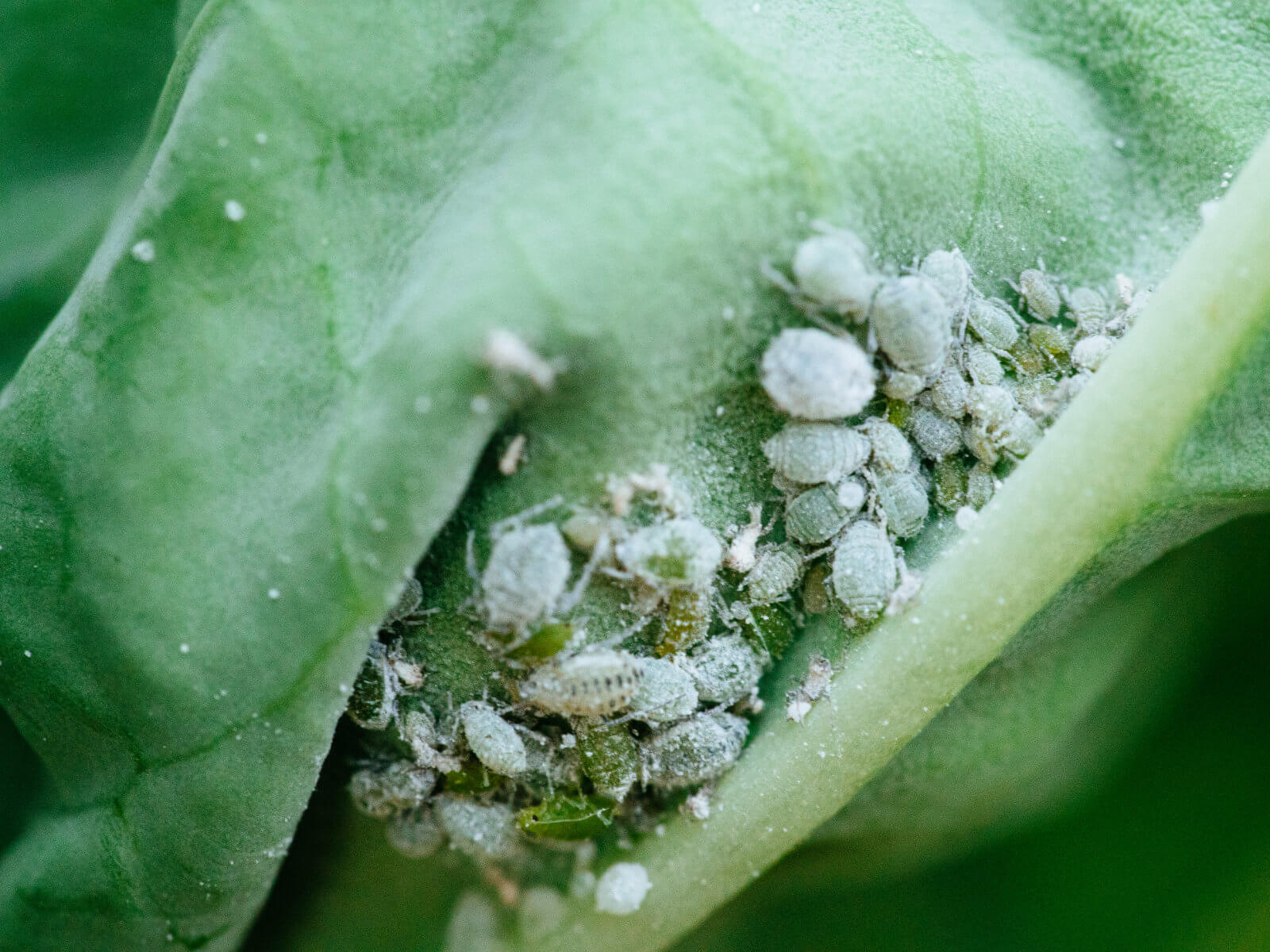
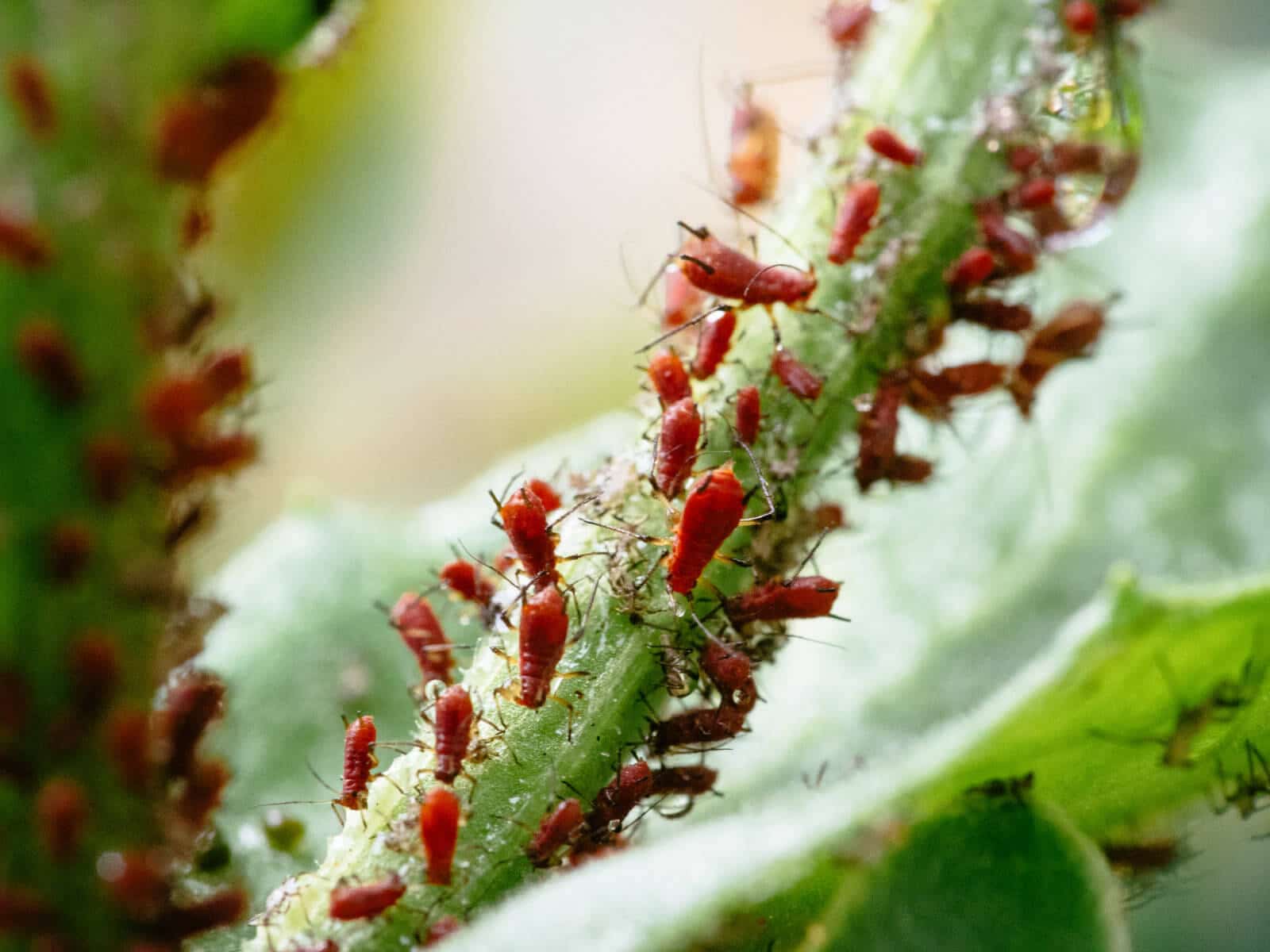
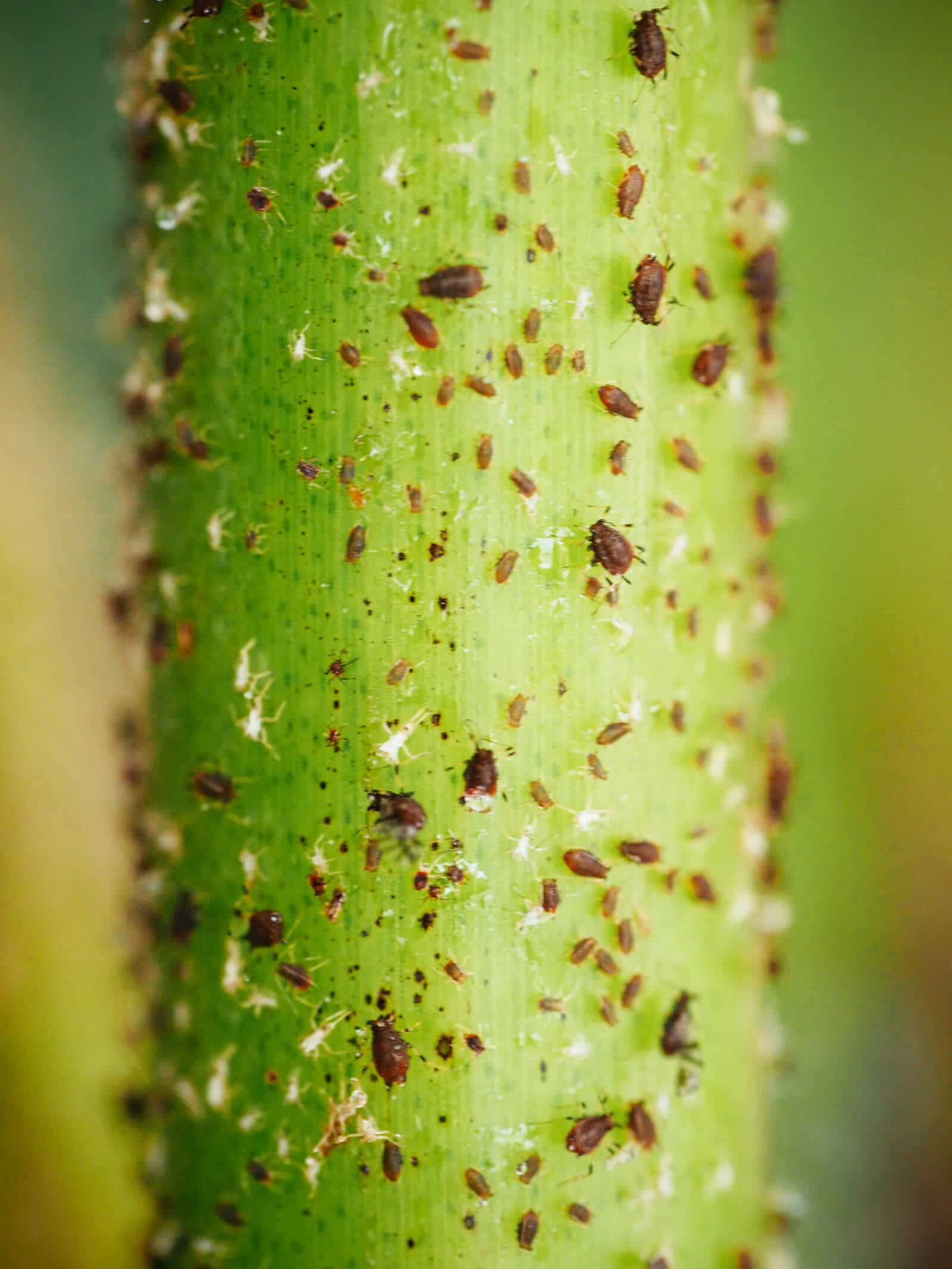
Some aphids even have wings, which makes it easy to mistake them for other pests. This happens later in the season when the aphid population on a plant becomes too massive to sustain the colony.
In response to the overcrowding, hormones trigger the development of wings in female aphids to help them fly to other food sources and, unfortunately for us, establish new colonies. They do so quickly and efficiently by being viviparous—that is, giving live birth.
Though they may be small and seemingly insignificant compared to other insects, they thrive by the sheer force of their numbers. If there’s one thing aphids are really good at, it’s reproducing, which is how they’re able to overrun a plant before you can even blink.
How they reproduce so quickly
If it seems like the aphid population in your yard just exploded overnight, it sort of did.
You see, aphids don’t rely on sex for reproduction. A typical life cycle starts in spring with wingless female adults giving birth to female nymphs without the need for male mates.
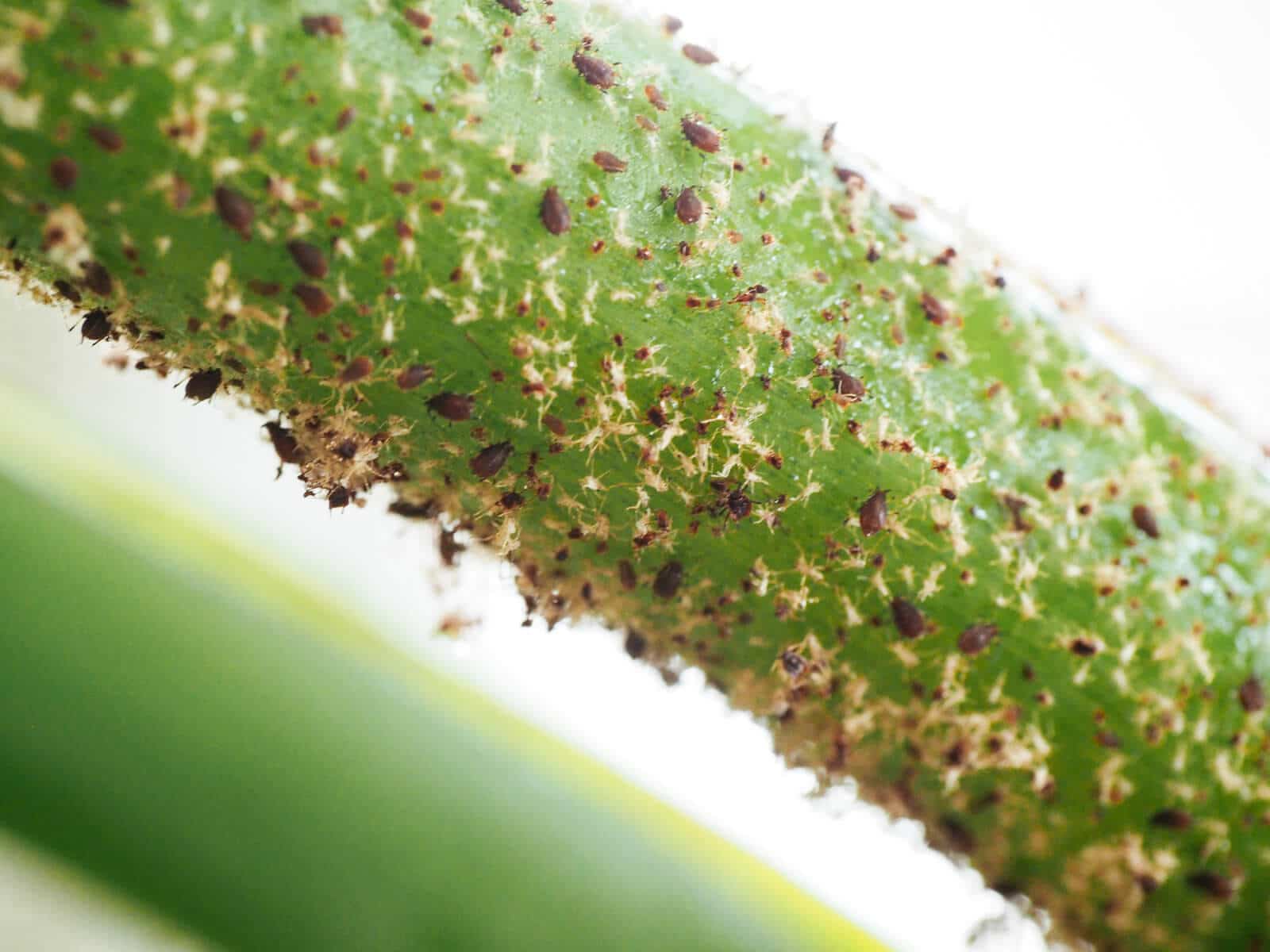
Because they’re not sitting around waiting to hatch, the females mature rapidly and go on to produce the next generation of females.
That generation soon produces more females, and on and on—all without a single male involved. (With very few exceptions, the aphids in spring and summer are all females.) Each generation lives for 20 to 40 days.
This is why it seems like aphids keep coming back; it’s not the old aphids that return, but new generations of aphids that continue to be born.
For most of their life, aphids remain on a host plant until the infested plant curls up and dies. Contrary to popular belief, they don’t actually “eat” or chew on the plant; rather, they suck sugar-rich plant juices through their straw-like mouthparts, draining the plant of nutrients.
Come autumn, as days become shorter and food sources are depleted, female aphids begin to produce winged females and finally, winged males.
They find suitable mates and—as an example of one of the many wonders of nature—these females (whom you now know are capable of being parthenogenetic) will actually lay eggs on perennial host plants. Yes, they can reproduce both ways!
These eggs overwinter and eventually hatch into the next batch of wingless matriarchs, who continue the family line in spring.
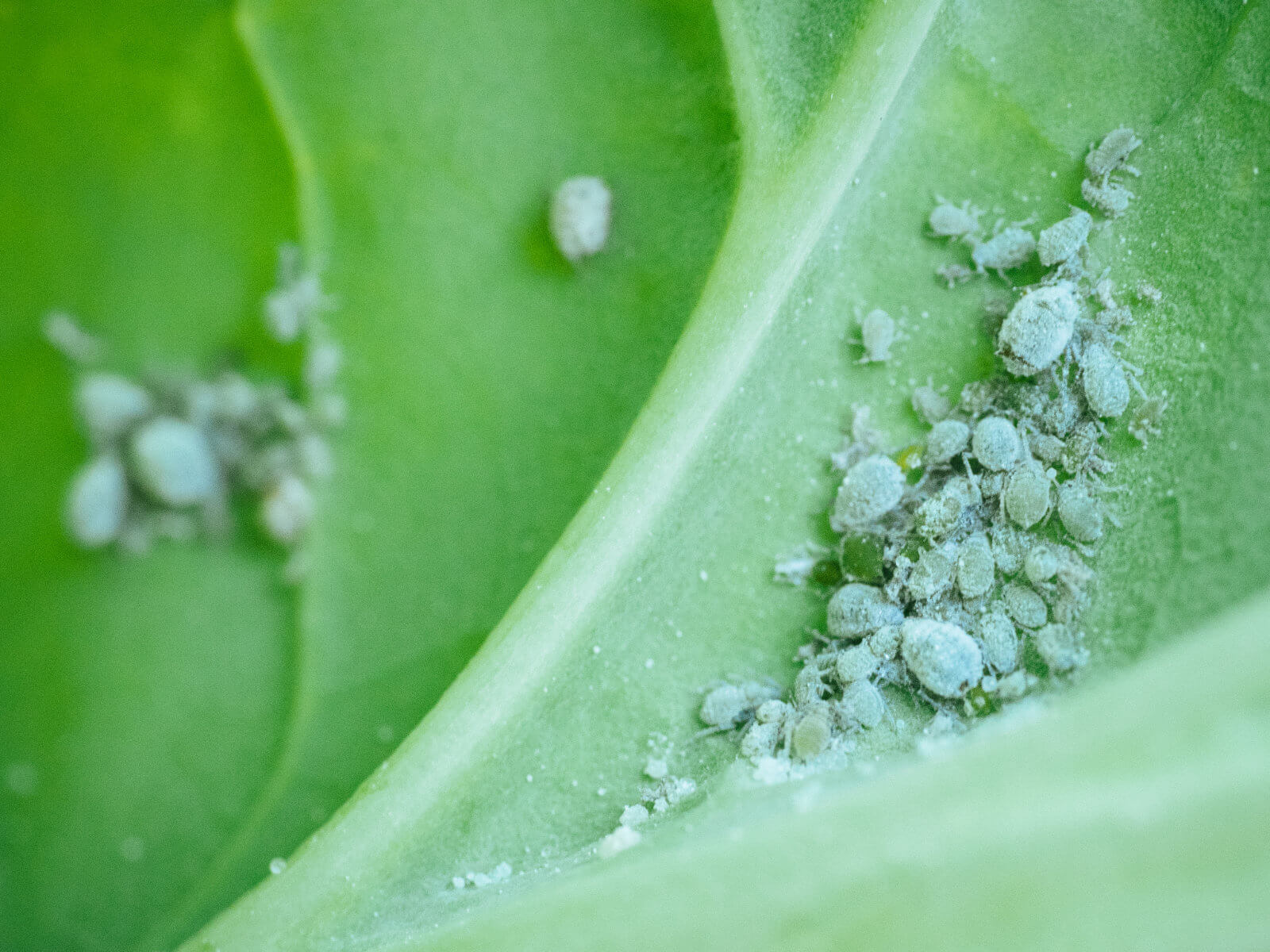
Do vinegar sprays, coffee grounds, banana peels, or [insert home remedy here] keep aphids away?
Vinegar contains acetic acid, and spraying a 50/50 solution of vinegar and water on aphids will kill them. Unfortunately, it will also kill or damage your plants, so I don’t recommend using a vinegar spray for aphid control in the garden.
Coffee grounds are usually touted as a cure-all when it comes to controlling garden pests like slugs, snails, and even aphids, but truth is… there’s no truth to their pest-repelling power.
Same goes for banana peels, which will not deter garden lice from your plants. (In fact, leaving whole or chopped-up banana peels around your plants may only increase the number of pests, like raccoons and opossums, visiting your yard.)
Save those coffee grounds, banana peels, and other kitchen scraps for your compost pile instead, where they’ll be much more useful.
How to prevent or get rid of aphids naturally
Keeping aphids off your plants starts with keeping them out of your yard in the first place with good gardening practices. Prevention is easier than intervention, but it’s possible to get rid of aphids permanently without nasty chemicals.
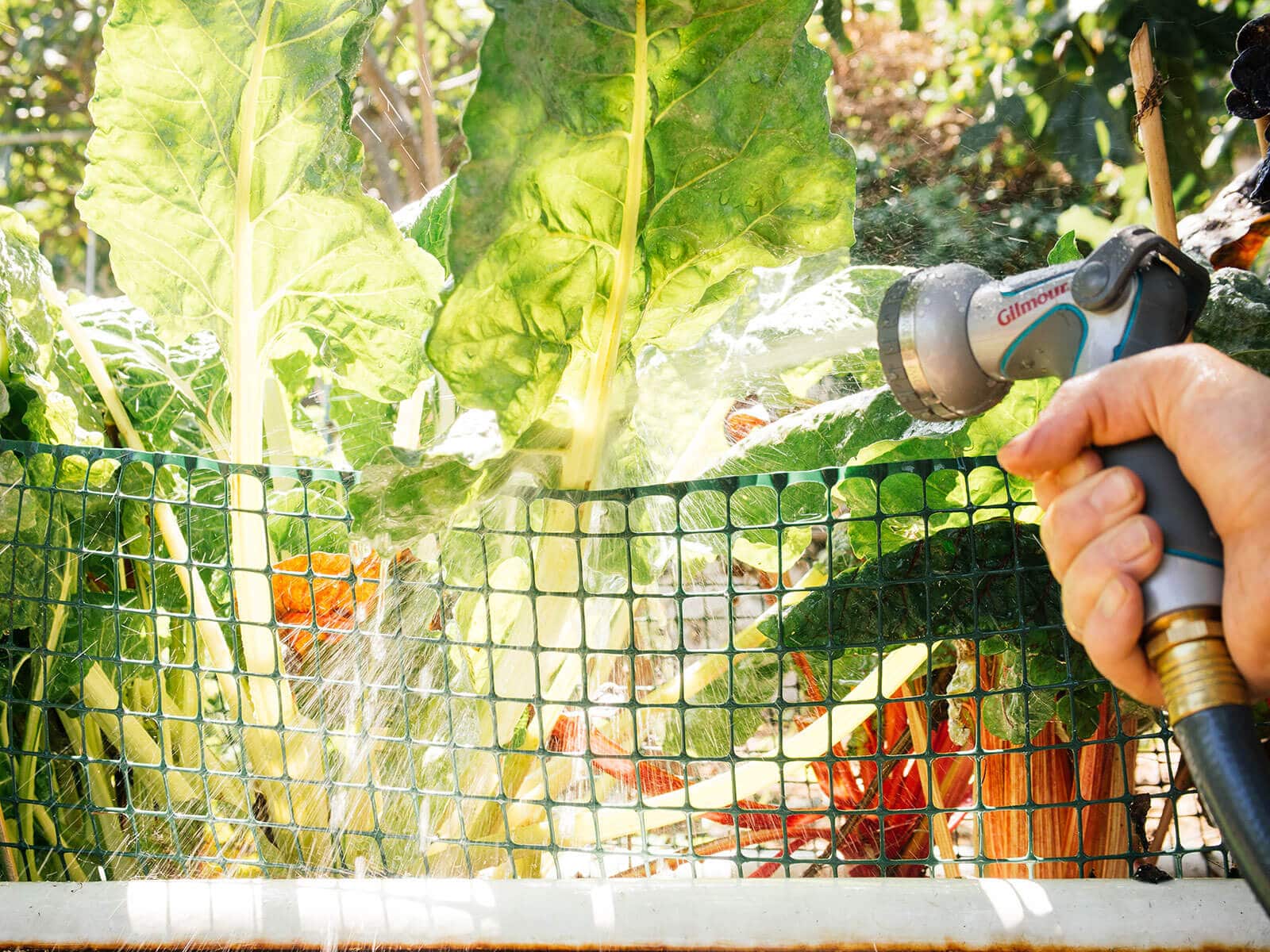
The hardest part of killing aphids is making sure you catch an invasion early, before the colony has multiplied and become unmanageable. When one of the natural control measures below is used early and effectively, plants can recover from aphids and go on to have productive yields.
Aphids like to shelter on the undersides of leaves and hide deep in the centers of plants like lettuce and broccoli, so get in the habit of inspecting your plants regularly, especially during periods of new growth.
1. Avoid over-fertilizing your plants.
Speaking of new growth, aphids are drawn to tasty, tender young shoots, so one of the keys to keeping their numbers in check is to avoid over-fertilizing your plants. Excess nitrogen causes a flush of new growth that helps sustain new generations of aphids.
Instead of applying fertilizer all at once, feed your plants smaller amounts of nutrients throughout the season, or use an organic slow-release fertilizer at planting time.
2. Keep your plants well watered.
Plants are prone to stress during periods of drought, so high summer is an especially susceptible time for aphid infestations. Plants are more defenseless during hot, dry conditions, as they’re not able to produce the chemicals they need to fend off pests.
Related: How to water your plants properly during a heat wave
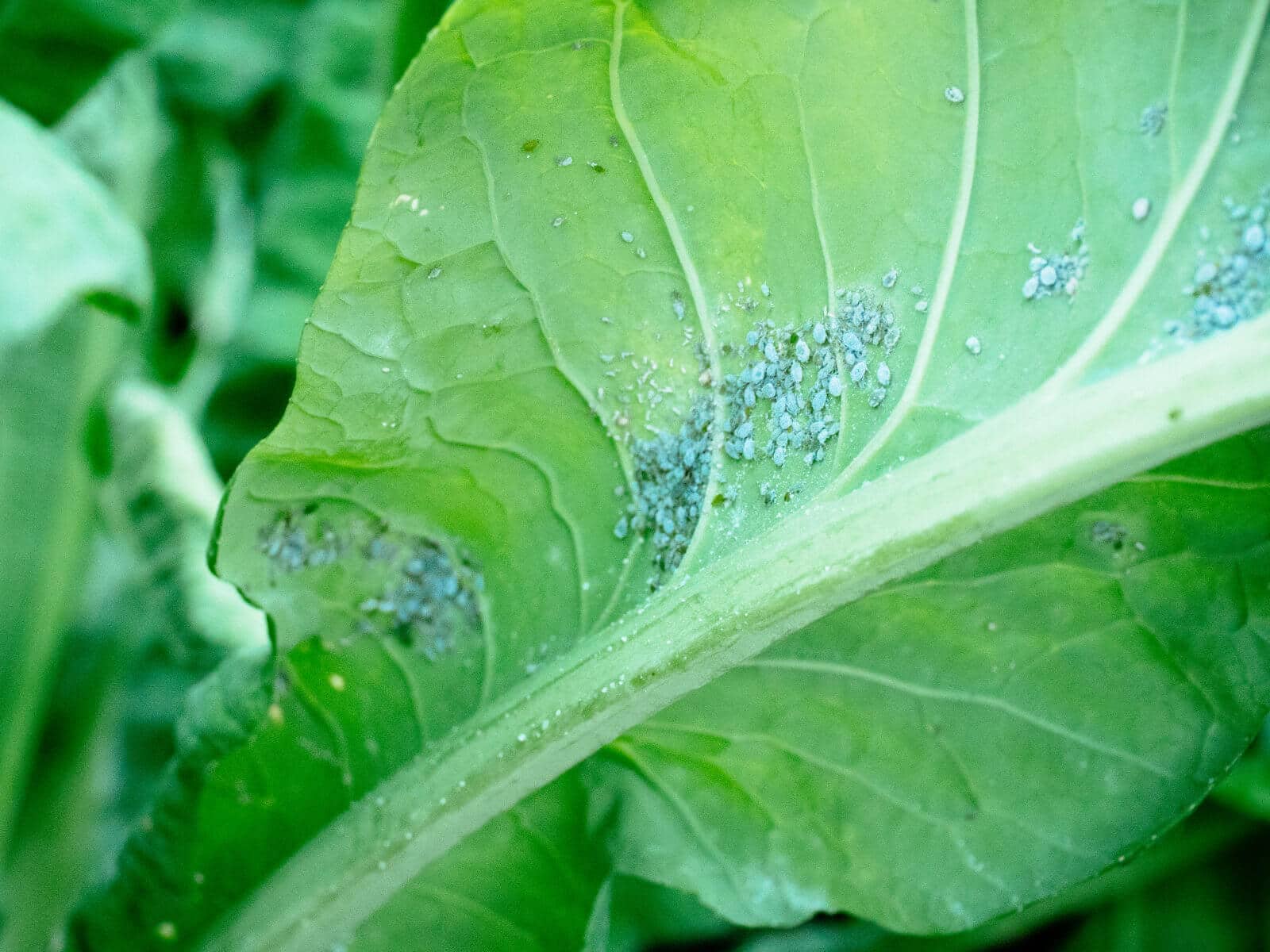
Drought can also increase the quality of the plant sap and make it more attractive to aphids. This happens because sugars and nitrogen become more concentrated in drought-stricken plants, allowing aphids to obtain more usable food in a shorter amount of time.
In order to prevent aphids in your garden, try to avoid underwatering (or for that matter, overwatering) so plants stay healthy and strong.
3. Attract beneficial insects to your garden.
Of all the good bugs you should attract to your garden, green lacewings and lady beetles are two of the most powerful and efficient predators to keep around.
Read next: How to attract ladybugs to your garden and actually keep them around
But it’s not the adults you’re courting; you just want them to stay long enough to lay their eggs. That’s because lacewing larvae and ladybug larvae are voracious feeders and will eat hundreds of aphids before they pupate. (They’re much less predacious as adults, when their preference turns toward nectar and pollen.)
Encourage lacewings and ladybug to search for food in your yard by attracting them with homemade lacewing and ladybug food.
Other natural predators of aphids include parasitic wasps, damsel bugs, big-eyed bugs, and hoverflies, whose adults and/or larvae consume all or parts of aphids.
Just the mere presence of parasitic wasps has been found to alarm aphids so much that they drop off the plant to the ground, where they eventually die.
I often leave a small colony of aphids on select plants for the sole purpose of feeding and keeping ladybugs and other beneficial insects around. You can attract more of these good bugs to your garden by growing a wide variety of their favorite nectar-rich flowers.
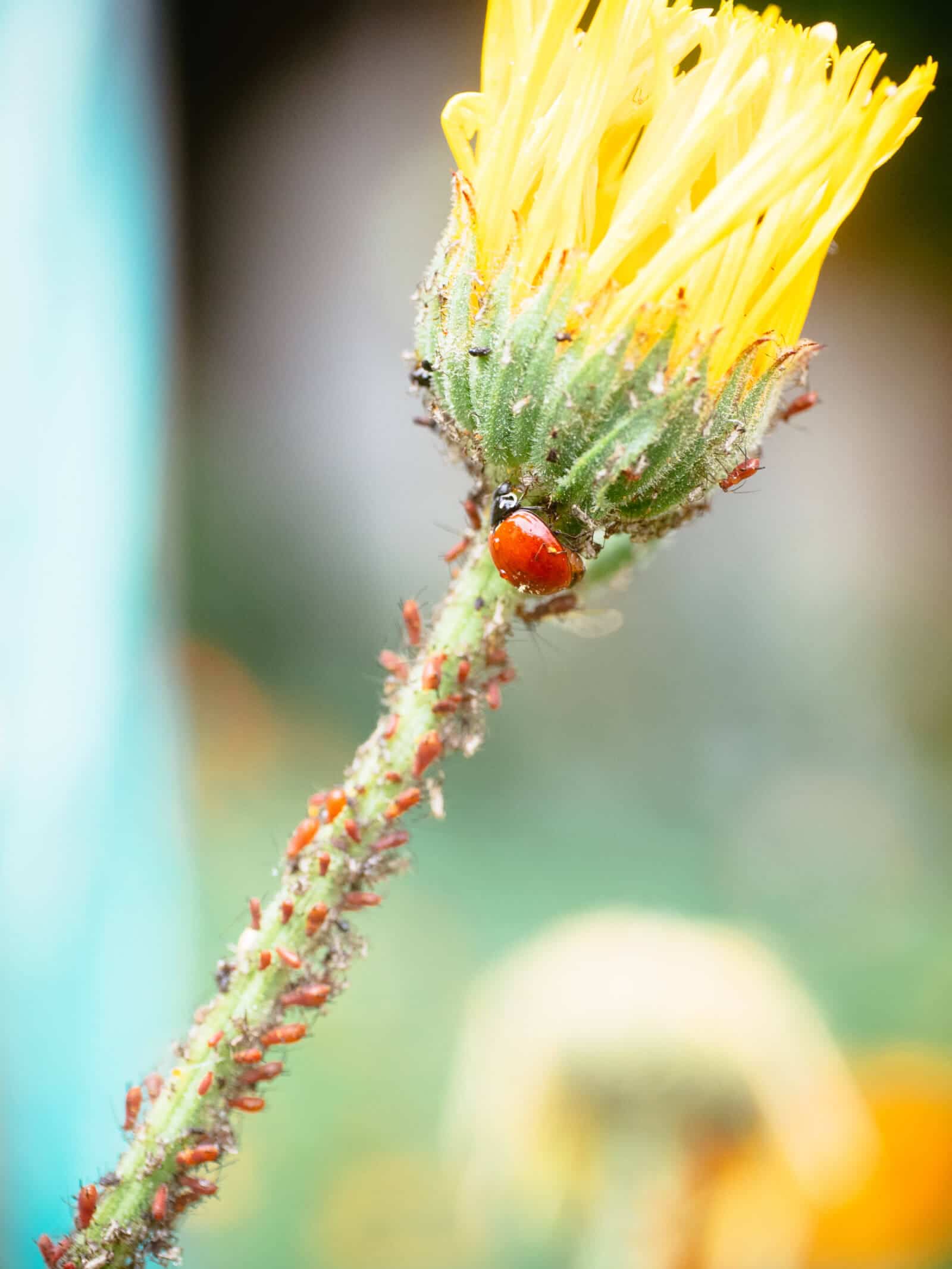
Beneficial flowers include umbels (like dill and Queen Anne’s lace), flat, single-headed blooms (like cosmos and black-eyed susans), and clusters of florets (like lantana and basil blossoms). You can find a list of easy-grow, pollinator-friendly plants here.
A popular method of pest control among greenhouse growers is using “banker plants” to introduce parasitic wasps as a biological means of pest management.
The wasps arrive by way of wheat and oat plants, which have been infested with cereal grain aphids. Since these species of aphids only colonize grains, they’re harmless to fruit and vegetable plants.
Many of the aphids have already been parasitized by wasps. When the newly hatched wasps emerge from their host “mummy” aphids, they begin to parasitize other aphids. The wasps are so good at their job that a small population can keep aphids in check for an entire season, all without the use of pesticides or other biological controls.
4. Grow plants with natural pest-repelling properties around your yard.
Plants with powerful aromas are known to keep aphids and other pests away naturally, and all you have to do is grow them around your yard.
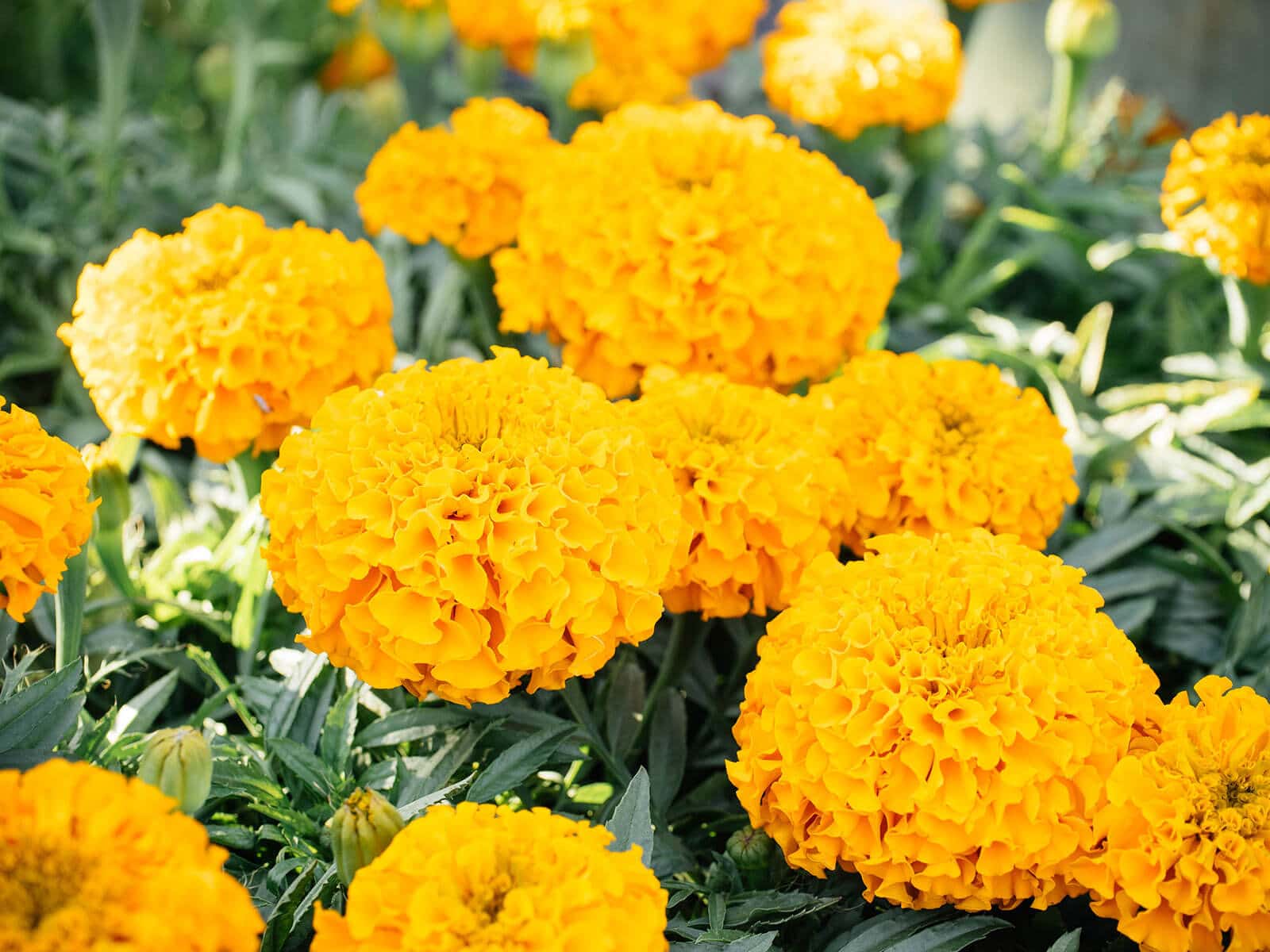
Aphids especially hate the strong scent of marigolds and catnip, so they make great companion plants for valuable crops you’re trying to protect.
Herbs that we consider wonderfully fragrant, like dill, fennel, cilantro, chives, and peppermint, also have smells that deter aphids. Plant them in containers as well as in garden beds right next to your vegetables to take advantage of their pest-repellent properties.
5. Plant a trap crop to attract aphids.
A trap crop is a sacrificial plant (a decoy, if you will) used to attract aphids so they stay off your more valuable plants.
Trap cropping is another form of companion planting as it’s most effective when planted around, or next to, the plants you want to protect.
Since pests tend to work their way from the outside in, you should plant trap crops around the perimeter of your garden early in the season (at least a couple weeks before your other plants) so they have time to spread and bloom before your main crops get going.
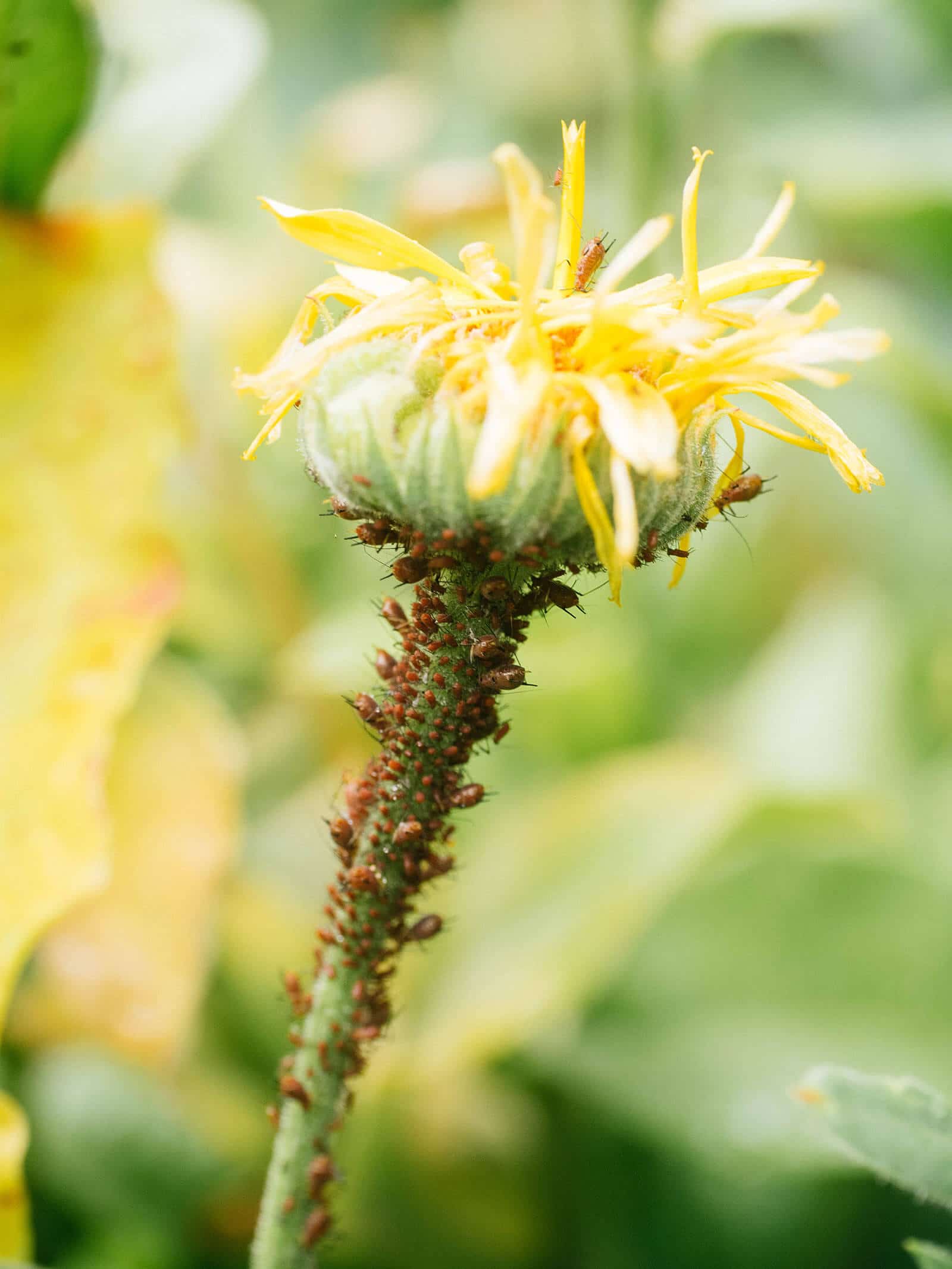
Good trap crops for aphids include nasturtiums, calendula, and nettles. Once the aphids swarm these sacrificial plants, pull them up and throw them in the trash.
You may compost aphid-infested plants if your compost pile gets to a high enough temperature to kill the aphids (around 140°F is optimal), but make sure the compost is far enough away from your garden area.
6. Use a strong spray of water to knock aphids off your plants.
Of all the natural remedies for getting rid of aphids quickly and effectively (not to mention inexpensively), a simple, strong blast of water is one of the best and easiest ways to control these pests.
After all, everyone’s got a garden hose; just aim it directly at the affected leaves and stems to spray the aphids off. With their weak legs, most of the aphids will be unable to crawl back up the plants to feed.
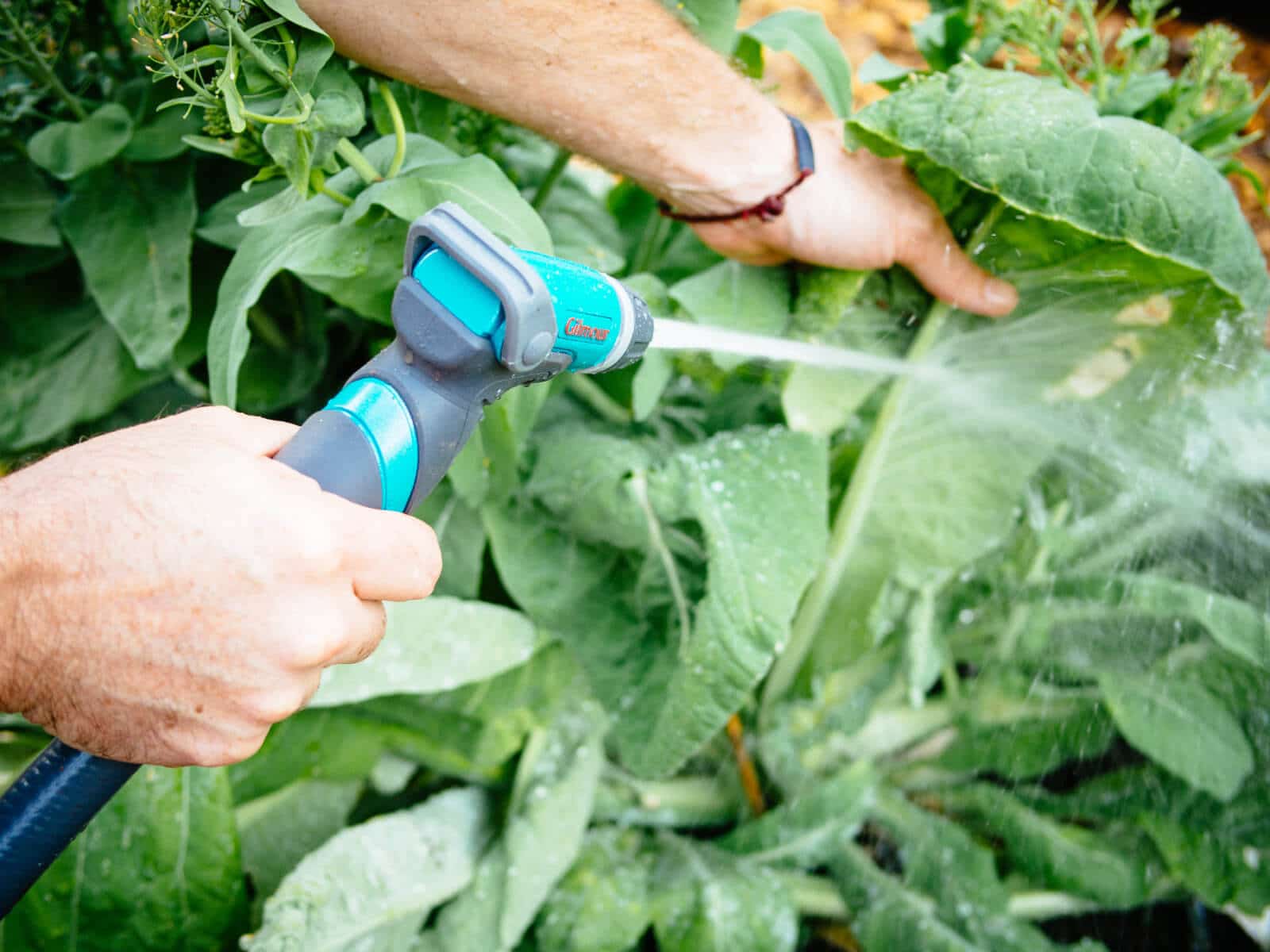
The water will also rinse some of the “honeydew” off and prevent an ant infestation at the same time. (Read more about aphid honeydew below in #9.)
Repeat every few days as needed until the population is visibly reduced. In cases of very young, fragile plants, or extreme infestation where it isn’t feasible to continually drench your plants, consider the next steps in organic aphid control.
7. Use insecticidal soap to naturally kill aphids.
Because of their soft bodies, aphids are easier to kill than many other pests. They’re especially susceptible to natural chemical controls like soaps and oils that disrupt the structure of their membranes and suffocate them.
Insecticidal soap is very effective against aphids and overwintering aphid eggs when sprayed directly on them. It’s also a good way to get rid of aphids on indoor plants (since you can’t bring in beneficial insects or blast them with water).
Make sure you only use insecticidal soap where you see aphid colonies—typically on the undersides of leaves—and not resort to spraying the entire plant.
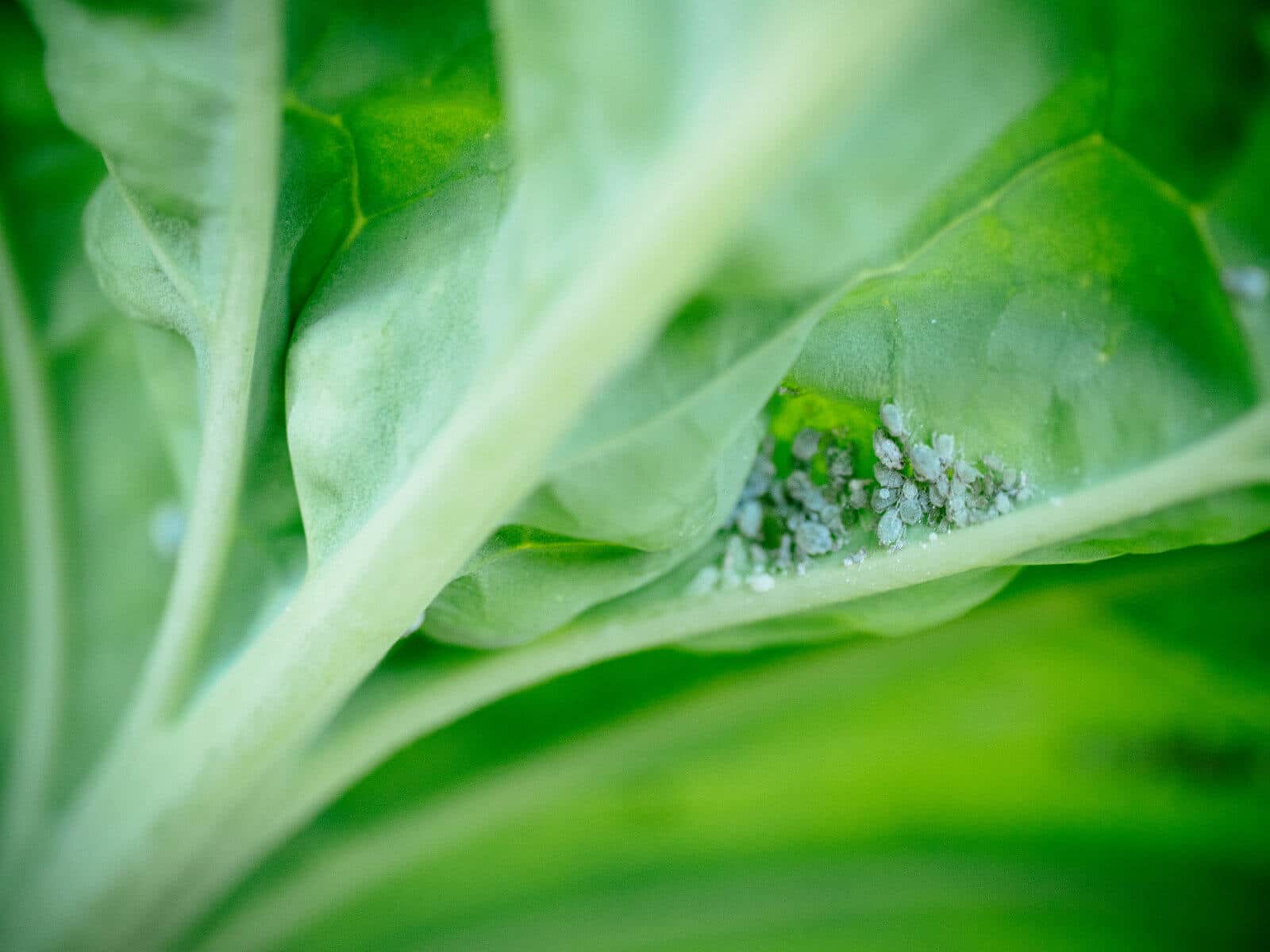
The way insecticidal soap works is upon contact, and while it’s wet. Unlike other pesticides, it is not systemic (absorbed into plant tissue), so it stays on the surface and loses effectiveness once dry.
You can easily make your own insecticidal soap at home with this recipe (only two ingredients needed) and extend its usefulness by adding peppermint or eucalyptus essential oils, whose strong aromas may help repel new aphids.
Other potent treatments include neem oil and horticultural oil, which also must be sprayed directly on the pests.
Disclosure: If you shop from my article or make a purchase through one of my links, I may receive commissions on some of the products I recommend.
Where to buy
Aphid treatments
8. Lightly dust your plants with diatomaceous earth.
Diatomaceous earth—also called DE or diatomite—is a sedimentary rock (or more accurately, the fossilized remains of tiny, aquatic organisms called diatoms) that contains silica. It naturally accumulates in rivers, lakes, and oceans, where it’s mined.
The rock is easily crumbled into a fine white powder that’s harmless to humans (so long as one takes ordinary precautions against excess inhalation) but deadly to pests like aphids.
While we can’t see them with the naked eye, the diatoms have razor-sharp edges that can cut through the waxy outer layer of an insect’s body upon contact. This allows moisture to escape from the insect’s body, fatally dehydrating it.
You can kill aphids by lightly coating them with diatomaceous earth. (I like this simple tool for applying DE safely and efficiently.)
Make sure it’s food-grade DE and not pool-grade/filter-grade DE, which is used for filtration in swimming pools and fish tanks. The latter is not safe to use around humans and animals because of its high concentration of crystalline silica.
Inspect all the surfaces, nooks, and crannies of your plants (as well as the soil) for adults, nymphs, and eggs, and sprinkle or spray them with a fine layer of DE once every few days to kill them.
Because the dust is easily washed away by moisture, DE should be reapplied after periods of rain, high humidity, or overhead irrigation.
9. To control aphids, you should also control ants.
Aphids and ants have a mutualistic relationship; by eliminating one, you’ll likely eliminate the other.
As aphids feed on plant sap, they excrete a sticky, sugar-rich liquid waste called honeydew. These plant sugars are a byproduct of digestion (think of it as aphid poop) and ants go wild for it.
In fact, some ants will even express (or “milk”) the honeydew right out of the aphids come feeding time!
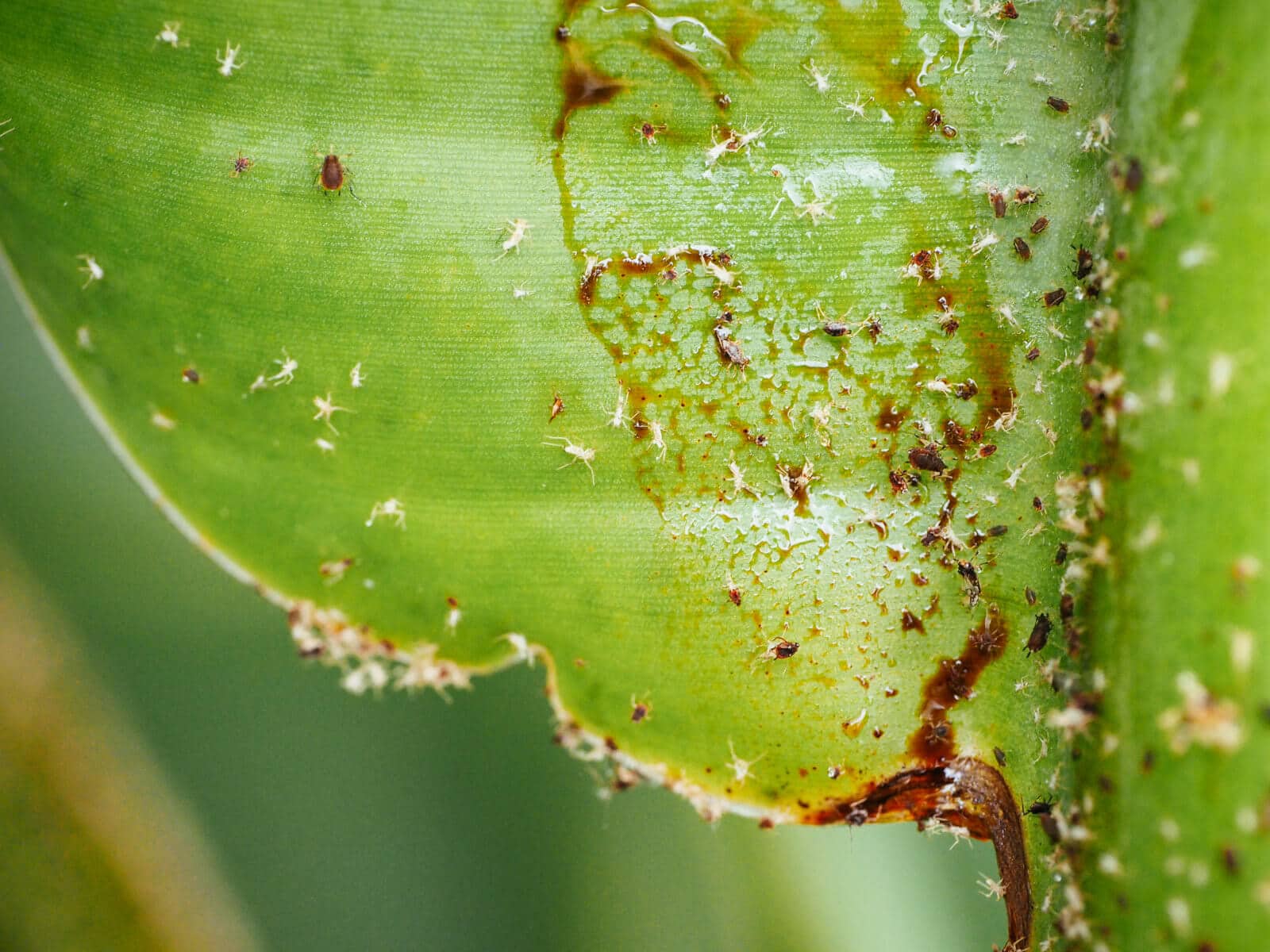
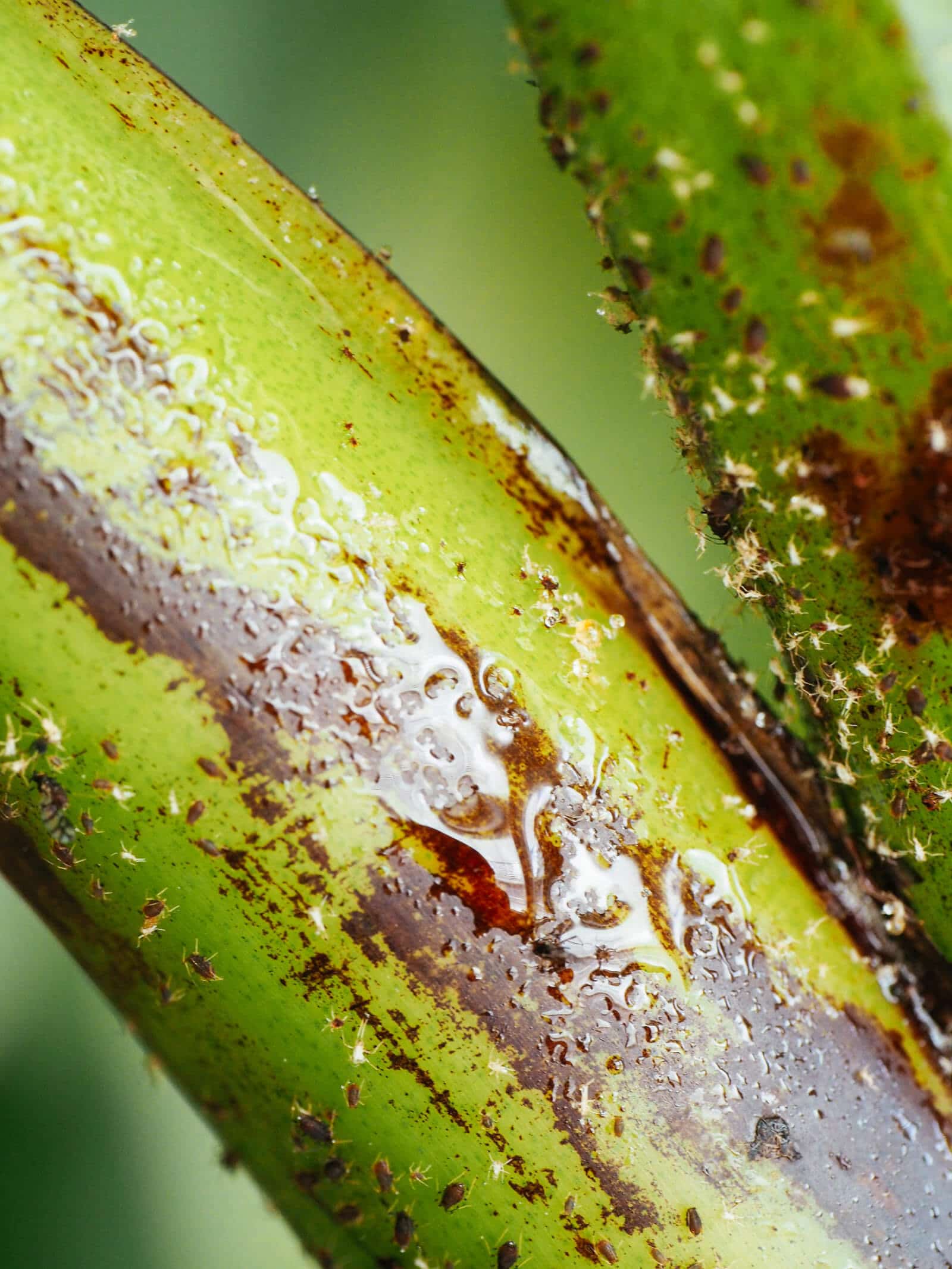
To keep the honeydew coming, ants act as guardians of sorts, protecting the aphids from predatory insects. Certain ant species will even go so far as moving aphid eggs into the storage chambers of their nests to help them survive winter.
The complex relationship between ants and aphids isn’t all warm and fuzzy, however. Science has shown that some ants have been known to bite the wings off aphids to keep them from flying away (and depriving the ants of their food source).
It’s also been found that chemicals on ants’ feet have a sort of tranquilizing effect on aphids, subduing them and making them less likely to leave the host plant.
Diatomaceous earth also happens to be effective against ants, so you can tackle them both at once. Keep an eye on a sudden emergence of ant colonies around your plants, as their presence may indicate aphids hidden in the foliage.
By getting rid of ants in your garden or house, you’ll allow beneficial insects like ladybugs to do their job.
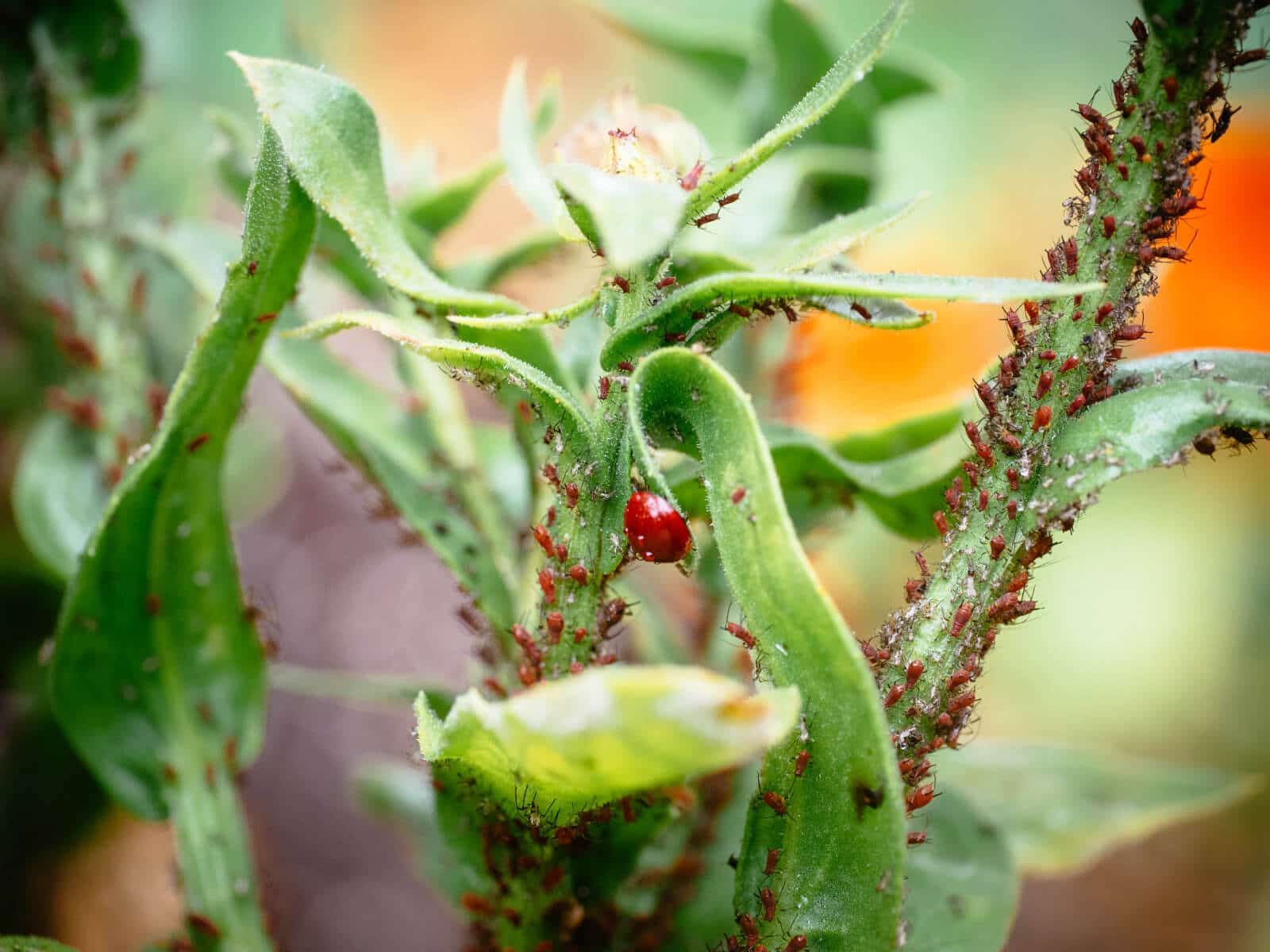
If all else fails, weather can be on your side
When it comes to hands-off aphid control, your chances of fighting them are better during the peak of summer. That’s because aphids are fairly fragile, and will die off in droves during periods of high temperatures over 90°F and high humidity.
This is also when your plants become more stressed, however, so to make sure they survive (and the aphids don’t), keep them well watered and mulched.
This post updated from an article that originally appeared on October 23, 2019.


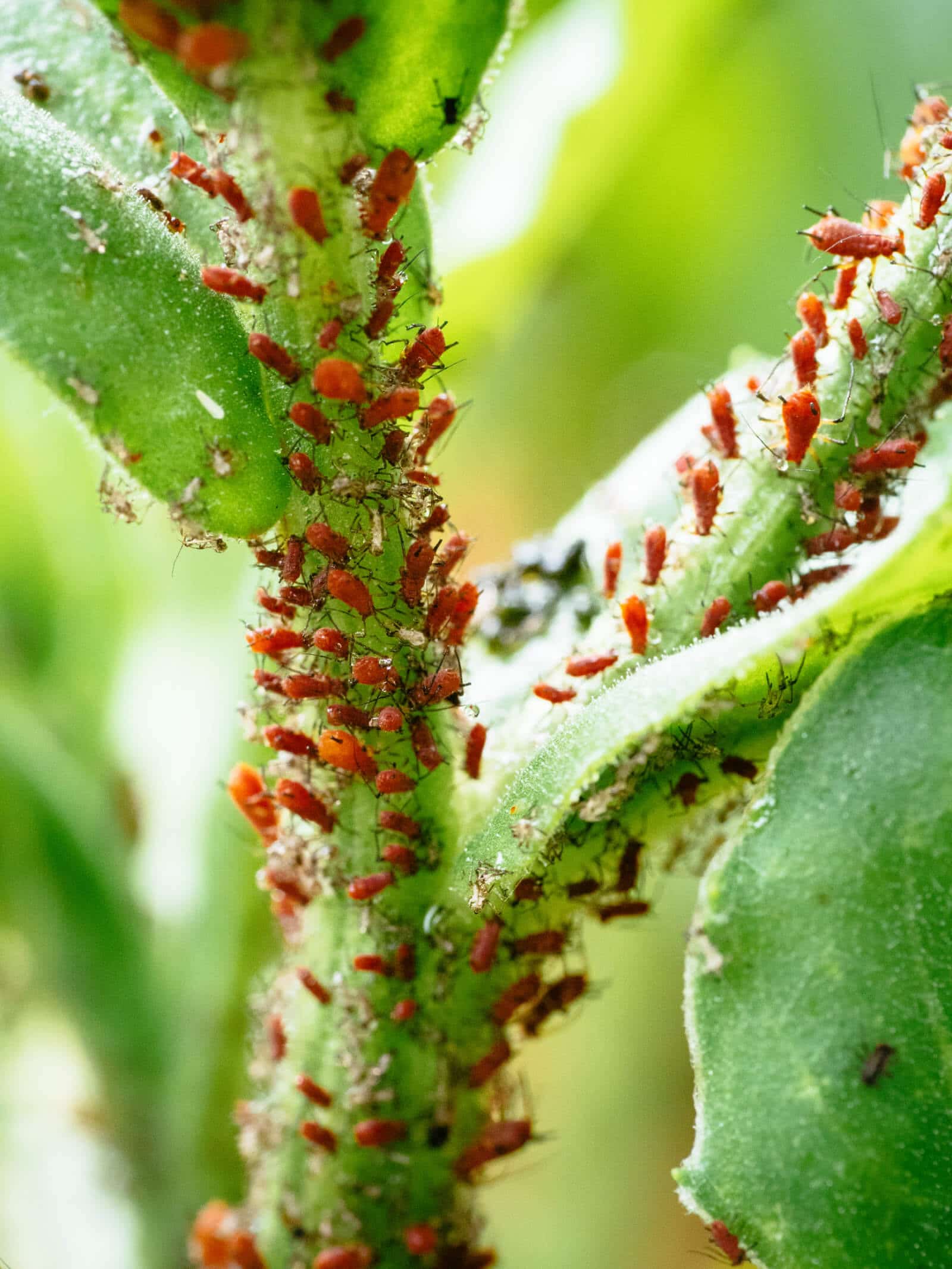













Another terific post! I’ve been lucky not to have been bothered by aphids due to weather unfavorable to plants. I’ve found that sometimes I can make a useful estimate of soil balance by observing aphid infestations. For example, around 1980 i was contracted as horticulturist for one of the minimum security prisons of the Massachusetts Division of Correction (or something like that.) They has acquired an old Shaker farm, which overall had an excellent design. When I first arrived, I noticed that clover in one of the fields was infested by aphids. Often this is due to a nutrient imbalance in the soil, most often excess nitrogen. Clover acquires its nitrogen (N) from symbiotic bacteria that convert inert N, from air to a chemical form useful to vascular plants. The field has not bee managed in some time, so no one had fertilized with N or anything else in some time. So excess N was not indicated. In that species of clover (maybe all species or all N-fixing legumes, I don’t know about that), phosphorus (P) not N limits rate of growth, so excess P was not the issue. That leaves potassium, the other member of the ‘big three’ as suspect. This was bottom land in the flood plain of the Merrimack river, so it was especially well drained. Potassium (K) is highly susceptible to leaching and flood plains are usually quite susceptible to leaching, so low K seemed probable and I managed my projects accordingly. A subsequent soil test subsequently confirmed my hypothesis. The appearance of plants often gives useful clues to soil imbalances. Soil tests are a useful tool, but they can sometimes be misleading. Around 1970 I sent soil samples from my homestead garden to be tested by the Cooperative Extension Service. The test came back indicating low N. I was astonished since I was tilling about an inch of chicken manure to yearly alternating halves of my garden. That supplied N and P. I was incorporating wood ash to provide K, elevate pH (most New England soils naturally have low pH) and provide trace minerals. I was growing cabbages the size of volley balls. I grew all our vegetable year round in a relatively small space and in summer was selling surpus at farmers’ market. I concluded that the N must have been tied up by microorganisms. But the professional soil test did not reflect the amount of N in the soil, just the amount of availabe N. Soil life shuffles forms of N constantly in an underground ecosystem if fed well and not poisoned.
Thank you for the information on how to get rid of aphids. I didn’t realise I could kill aphids with DE or that I could just flush them off with water (I thought they’d crawl back up. My lupins have been attacked at the moment, so I shall be out today sorting it with your tips. Thank you.
Exactly what I need to keep my milkweed safe! What an education about how aphids reproduce. If I put diatomaceous earth at the base of my milkweed to kill the ants and spray aphids with a spray bottle my caterpillars should be safe. Is there anything else to spray aphids with other than water that won’t both any of the stages of the monarch?
Water is the only thing you should spray with any regularity. Good luck!
You can write an article without a hundred nasty pictures of bugs. We get it. Not everyone is fine with seeing nasty bugs one photo would do. Just gross. Too much.
The pictures in this article are meant to help readers identify all the different types of aphids they may be seeing on their plants (and personally, I find it both fascinating and helpful to see them up close). You might consider aphids “nasty” (especially if they’ve infested your food crop), but honestly, if you’re this disgusted by an otherwise innocuous bug that doesn’t harm humans, you’re going to have a really hard time gardening LOL.
Nah, the pictures are helpful, friend. You can expect to see pictures of aphids in an article about aphids.
Thanks for the heads ups on aphids. I have been overwintering some tomatoes and one plant in particular developed an aphid “infection”. I have been picking off or squishing them all winter, not realizing the little white “hairs” on the tomatoe plants were actually bug eggs. Once I started wiping them off, I have had less aphids. At first, I was afraid to hurt the tomato plant, but found that by gently squishing the leaves, I killed more aphids. I also started wiping the stems, and saw a powder fall off which I figured out was aphid eggs. EEWE. My porch was not real warm probably 40 degrees, when the warmer weather came, more started showing themselves. One day, I took a second look at the plant. Those little critters came out of their hiding places, quickly, to what seemed to be to take a look at what was killing off the colony. I squished them immediately. As the weather warms up, I am seeing more aphids on other plants and am not happy. Before I replant these plants in my garden, I plan on moving the dirt off of the roots, holding the plants upside down, and shaking “Seven” on them. I did use the “Seven” last year but it also killed most of the bugs in my garden even the “good” bugs. I am hoping by using this method before the planting it won’t kill the pollinators that may come from other areas into my garden.
I value the useful suggestions you have actually offered here.
Won’t diatomaceous earth kill ladybugs too?
Yes, DE can kill ladybugs, so you should only apply it directly on aphids as a last resort.
Any suggestions for controlling white flies on brassicas? I have tried plain water, home-made insecticidal soap, and diatomaceous earth. Nothing seems to work! They get so bad by mid-late summer that I stop harvesting those plants until freezing weather kills them off.
This is the solute best article on aphids I have ever read! Thanks so much! They have attacked my gorgeous Goldflame honeysuckles for three years, and I am weary of fighting them.
absolute!
Wow! Here, I’ve told everyone, my problem on my plants curling, yellowing and spotting was because of carpenter ants sucking the nutrients out of the leaves? Here it was aphids?! Thank you for all of the info. I hope I can help all my tomato plants, green pepper’s, radishes and potato plants?! Thank you Ever So Much!!!
Aphids are not deterred by marigolds. We planted 75 marigolds to 50 tomato plants and we still have a growing population of aphids. Just an FYI to others neem oil takes days to work and you cant water your plant after treatment or else it washes the oil away. Therefore your plants gets thirsty waiting on the neem oil to work.
Hi-so what are you doing/have done to eliminate aphids? Appreciate any help here.
So how to get rid of aphids? Plz let me know I am tired they on all my peppers plant
I use a butane burner to kill aphids! First, spray lightly the infected leaves Eg my papaya plant to wet them so as to prevent them from being scorched. Then I use a small flame to kill the aphids quickly by fanning the flame across their white bodies. Very effective!
Very informative indeed. This could easily be titled “Everything you need to know about aphids and ants in your garden”. Thank you Linda for doing such a wonderful job of researching the pest control situation.
“